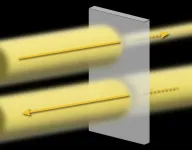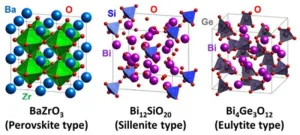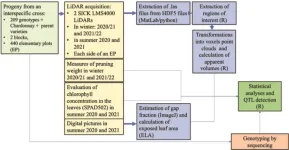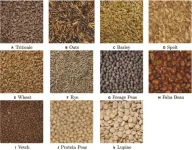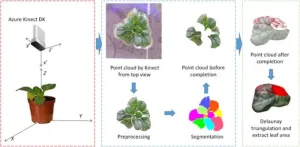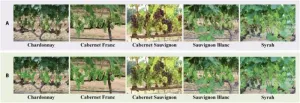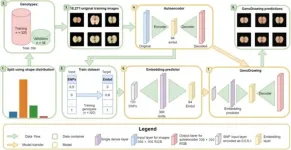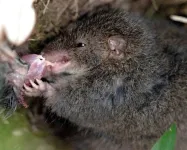Scientists uncover new marine source of carbon emissions into atmosphere, finding bottom trawling contributes to global warming
Landmark study finds bottom trawling responsible for injecting up to 370 million metric tons of carbon dioxide into the atmosphere every year; reveals trawling in East China, Baltic, North Sea and Greenland Sea have largest climate footprints
2024-01-18
(Press-News.org)
(WASHINGTON, DC) 18 JANUARY 2024 — Bottom trawling is a previously unaccounted for source of atmospheric carbon emissions, scientists reveal in a study published today. As the world scrambles to slash emissions caused by fossil fuels, deforestation and other sources, the study finds bottom trawling — the act of dragging a heavy fishing net across the ocean floor and resuspending some of the carbon in the seafloor sediment — to be a significant source of atmospheric carbon pollution. A previous study found that part of that disturbed sediment carbon turns into carbon dioxide underwater. Today’s study finds that 55%-60% of the carbon dioxide produced underwater by bottom trawling will make it into the atmosphere within nine years.
The amount of carbon released by bottom trawling into the atmosphere each year is estimated to double the annual emissions from fuel combustion of the entire global fishing fleet — about 4 million vessels.
“We have long known that dragging heavy fishing nets — some as large as ten 747 jets — across the ocean floor destroys sea life and habitats,” said Dr. Trisha Atwood of Utah State University and National Geographic Pristine Seas.
“Only recently, we have discovered that bottom trawling also unleashes plumes of carbon, which otherwise would be safely stored for millennia in the ocean floor. Our study is the very first to show that over half the carbon released by bottom trawling eventually escapes into the atmosphere as carbon dioxide over the span of about ten years, contributing to global warming. Much like destroying forests, scraping up the seafloor causes irreparable harm to the climate, society and wildlife.”
The study, Atmospheric CO2 emissions and ocean acidification from bottom-trawling, was conducted by a global team of climate and ocean experts from Utah State University, NASA Goddard Institute for Space Studies, the University of California Santa Barbara, Columbia University, James Cook University and National Geographic Pristine Seas.
The researchers used data on bottom trawling carried out globally between 1996-2020 and sophisticated models to calculate how much of the carbon dioxide produced by bottom trawling ultimately enters the atmosphere. This study builds on recent foundational research finding that the amount of carbon dioxide released into the ocean from bottom trawling is larger than most countries’ annual carbon emissions and on the same order of magnitude as annual carbon dioxide emissions from global aviation.
The new research identifies ocean areas where carbon emissions from bottom trawling are especially high, including the East China Sea, the Baltic and the North Seas, and the Greenland Sea. The researchers conclude that Southeast Asia, the Bay of Bengal, the Arabian Sea, parts of Europe and the Gulf of Mexico are also likely major sources of carbon emissions due to trawling, but we currently lack sufficient data on the extent and intensity of bottom trawling in these areas.
“Right now, countries don’t account for bottom trawling’s significant carbon emissions in their climate action plans,” said Dr. Enric Sala, National Explorer in Residence and Executive Director of Pristine Seas. “Our research makes it clear that tackling these and other ocean emissions is critical to slowing the warming of the planet, in addition to restoring marine life. The good news is that reducing bottom trawling carbon emissions will deliver immediate benefits. The bad news is, delaying action ensures that emissions from trawling will continue seeping into the atmosphere a decade from now.”
The new study also assesses what happens to the carbon that remains trapped in ocean waters after bottom trawling takes place. It concludes that between 40%-45% of the total carbon dislodged from the ocean floor by trawling remains in the water, leading to greater localized ocean acidification. This increased acidity damages plant and animal life in the area where the fishing activity takes place.
“There are more issues with bottom trawling than just the impacts from carbon — biodiversity and sustainability for instance,” said Gavin A. Schmidt, the Director of the NASA Goddard Institute for Space Studies. “But this ‘marine deforestation’ is large enough to be noted and assessed. Hopefully, this can lead to policy efforts that can try to maximize benefits across all of the impacts.”
###
END
ELSE PRESS RELEASES FROM THIS DATE:
2024-01-18
Osaka, Japan – At the heart of global internet connectivity, optical communications form an indispensable foundation. Key to this foundation are optical isolators, created by combining multiple components. The result is a complex structure that transmits light in only one direction, to prevent damage to lasers and minimize noise by avoiding the reversal of light. However, some magnetic materials have an optical diode effect – an unconventional nonreciprocal absorption of light manifested by the material itself. This effect leads to a change in transmittance depending ...
2024-01-18
Fukuoka, Japan – Researchers at Kyushu University, in collaboration with Osaka University and the Fine Ceramics Center, have developed a framework that uses machine learning to speed up the discovery of materials for green energy technology. Using the new approach, the researchers identified and successfully synthesized two new candidate materials for use in solid oxide fuel cells – devices that can generate energy using fuels like hydrogen, which don’t emit carbon dioxide. Their findings, which were reported in the journal, ...
2024-01-18
In response to the pressing need to reduce pesticide usage and adapt grapevine varieties to climate change, there's an unprecedented effort to phenotype new genotypes using high-throughput methods. Teams globally are developing advanced systems, employing technologies like multispectral cameras and LiDAR, to assess growth traits, photosynthetic capability, and other architectural parameters. However, traditional methods remain time-consuming and less efficient for large-scale studies. The current research gap lies in effectively employing LiDAR technology ...
2024-01-18
Cultivating seed mixtures for local pastures is an age-old method to produce cost-effective and balanced animal feed, enhancing agricultural autonomy and environmental friendliness in line with evolving European regulations and organic consumer demands. Despite its benefits, farmers face adoption challenges due to the asynchronous ripening of cereals and legumes and the difficulty in assessing the nutritional value of heterogeneous seeds. Current practices rely on informal, empirical methods, and a proposed solution is to develop a mobile app or online service, similar to Pl@ntNet, for automated nutritional evaluation of seed mixtures, ...
2024-01-18
The 3-dimensional point cloud technology revolutionizes non-invasive measurement of plant phenotypic parameters, offering vital data for agriculture and research. Current research focuses on overcoming the limitations of 2.5D imaging and occlusions. Methods such as structure from motion, multi-view stereo, and advanced active 3D reconstruction techniques are being explored for this purpose. However, issues persist with incomplete data acquisition and the inaccuracy of phenotypic parameter extraction due ...
2024-01-18
To improve grape yield predictions, automated berry counting has emerged as a crucial yet challenging task due to the dense distribution and occlusion of berries. While grape cultivation is a significant global economic activity, traditional manual counting methods are inaccurate and inefficient. Recent research has shifted towards deep learning and computer vision, employing detection and density estimation techniques for more precise counts. However, these methods grapple with the variability of farmland and high occlusion rates, leading to significant counting errors. Additionally, creating high-performance ...
2024-01-18
Advancements in whole-genome sequencing have revolutionized plant species characterization, providing a wealth of genotypic data for analysis. The combination of genomic selection and neural networks, especially deep learning and autoencoders, has emerged as a promising method for predicting complex traits from this data. Despite the success in applications like plant phenotyping, challenges remain in accurately translating visual information from images into measurable data for genomic studies.
In November 2023, Plant ...
2024-01-18
Erin Overstreet has been selected as the new executive director of the USC Stevens Center for Innovation where she will oversee the university’s commercialization of USC-driven intellectual property.
Overstreet’s expertise and experience embody technology transfer and innovation across the academic, educational, and venture capital sectors; such experience is critical for bridging USC research to a broadened, national technology transfer ecosystem, said Ishwar Puri, senior vice president of the Office of Research and Innovation.
“The university has the utmost confidence in Dr. Overstreet’s ability to ...
2024-01-18
In the field of Landscape Architecture, Topography aims to study the complex and ongoing changing relationship between humans and the land through continuously updated and iterative tools and media. It maintains a balance between abstract concepts and concrete perceptions, which can both drive the development of science and technology in this field and hold on to openness to artistic expression. Thus, topographical design may be an effective way to help facilitate refining landscape design methods.
The work entitled “Can Topography ...
2024-01-18
Associate Professor Andrew Baker from QUT School of Biology and Environmental Science said antechinuses are carnivorous marsupials well-known for suicidal sex sessions where all males die after the 1 to 3 week breeding period.
“During the breeding season, male and females mate promiscuously in frenzied bouts lasting as long as 14 hours. Certain stress-induced death follows for all males as surging testosterone causes cortisol to flood uncontrolled through the body, reaching pathological levels,” Professor Baker said.
“The males drop dead, which provides an opportunity ...
LAST 30 PRESS RELEASES:
[Press-News.org] Scientists uncover new marine source of carbon emissions into atmosphere, finding bottom trawling contributes to global warming
Landmark study finds bottom trawling responsible for injecting up to 370 million metric tons of carbon dioxide into the atmosphere every year; reveals trawling in East China, Baltic, North Sea and Greenland Sea have largest climate footprints
